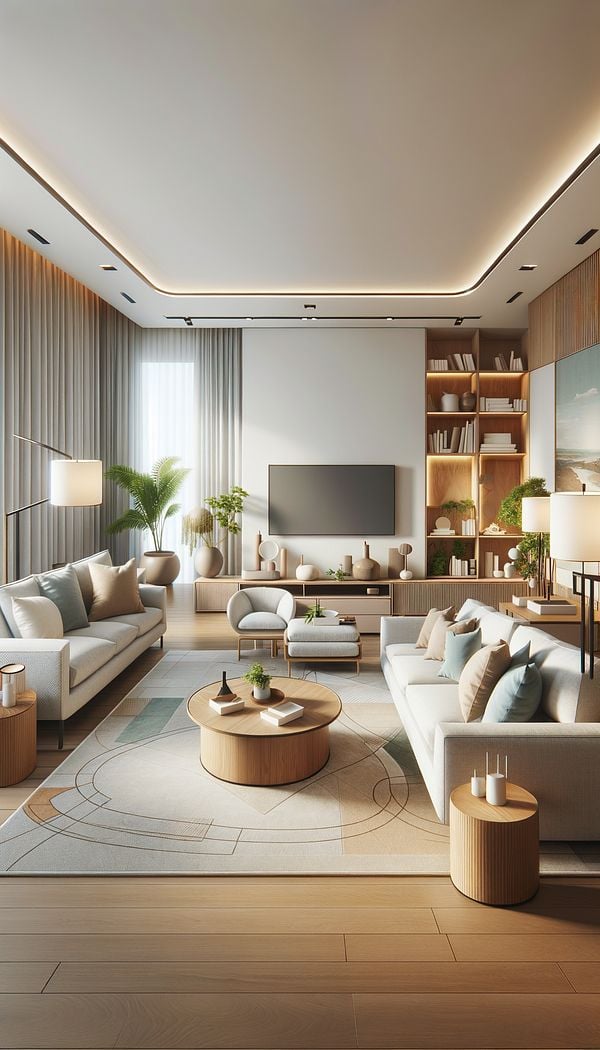What is Gender Neutral?
Gender neutral in interior design refers to spaces or designs that do not conform to traditional gender norms and stereotypes.
Description
In the context of interior design, gender neutral goes beyond simply being unisex or androgynous. It encompasses creating environments that feel inclusive and comfortable for everyone, regardless of gender. This approach to design considers not only the visual aspects, such as color schemes and furniture choices, but also the functional and emotional impact of a space on its inhabitants. The goal is to craft interiors that avoid reinforcing stereotypical gender roles and instead foster an atmosphere of equality and respect.
Achieving a gender neutral design often involves a thoughtful selection of colors, materials, textures, and decorative elements that appeal to a broad spectrum of preferences. Designers might steer away from heavy reliance on traditionally "masculine" or "feminine" motifs, opting instead for a balanced approach that emphasizes comfort, functionality, and personal expression. This strategy encourages a more inclusive view of interior design, making spaces welcoming to all genders and supporting a diverse range of identities.
Furthermore, gender neutral design can play a crucial role in public and commercial spaces, such as schools, healthcare facilities, and workplaces, where inclusivity is especially important. It ensures that these environments are accessible and comfortable for everyone, reducing the likelihood of alienation or discomfort due to gendered design choices.
Usage
Examples of gender neutral design in real-world applications include the creation of restrooms in public spaces that are accessible and comfortable for people of all genders, as well as children's play areas that avoid stereotypical color schemes and themes. In residential spaces, gender neutral designs may involve neutral color palettes, flexible furniture arrangements, and decor that reflects a wide range of interests and identities.
FAQs
-
Why is gender neutral design important in interior design?
Gender neutral design is important because it promotes inclusivity and accessibility, ensuring that spaces are welcoming and comfortable for people of all genders. It challenges traditional gender norms and stereotypes, creating environments that support a diverse range of identities.
-
How can one achieve a gender neutral design?
To achieve a gender neutral design, consider adopting a balanced mix of colors, materials, and textures. Avoid heavily gendered motifs and instead focus on comfort, functionality, and personal expression. Incorporating elements that appeal to a wide range of preferences is key.
-
Can gender neutral design still be stylish and personalized?
Absolutely! Gender neutral design does not mean devoid of style or personality. It encourages designers and inhabitants to express individuality in ways that transcend traditional gender stereotypes, allowing for a myriad of stylish, personalized, and inclusive interiors.
Practical Application
When aiming to create a gender neutral interior, start by choosing a neutral color palette that serves as a versatile backdrop for any room. Consider incorporating multifunctional furniture that can adapt to various needs and preferences. Use decorative elements thoughtfully, selecting items that speak to a wide audience rather than adhering strictly to traditional gender norms. Lastly, always prioritize the comfort and inclusivity of the space, ensuring it feels welcoming to everyone.
-
Design Styles478 articles
-
Decorating Principles & Elements330 articles
-
Materials & Textiles360 articles
-
Color & Patterns154 articles
-
Accessibility & Ergonomics30 articles
-
MantelA shelf above the fireplace.
-
AbstractAbstract in interior design refers to styles or elements that emphasize forms and colors over realistic representation.
-
ChecksChecks refer to a pattern comprising of crisscrossed horizontal and vertical lines, forming squares.
-
ElevationElevation is a flat representation of a facade or an interior wall, depicting it head-on.
-
File CabinetA file cabinet is a storage unit with drawers or compartments designed for organizing and storing files and documents.
